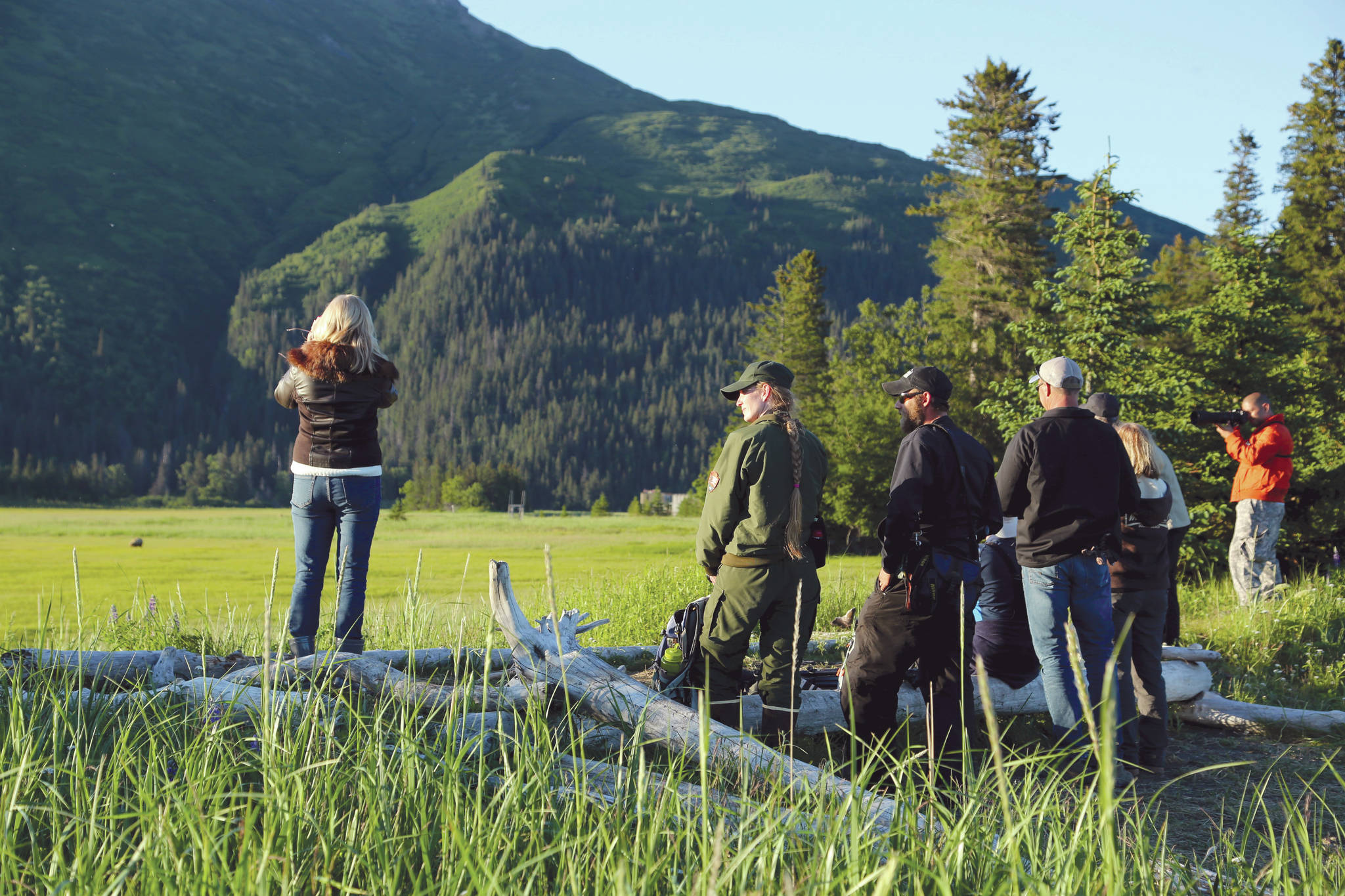Two national park and preserve areas, Lake Clark and Katmai, located just across Cook Inlet from the Kenai Peninsula, offer some of Alaska’s most spectacular visitor destinations. Forty years ago, the Alaska National Interest Lands Conservation Act established and expanded these parks in order to protect their spectacular scenery, abundant wildlife, subsistence resources and rich cultural history.
Active volcanoes and fumaroles, high alpine glaciers, pristine lakes and rivers, and lush coastal meadows provide habitat for many species of wildlife, including the iconic brown bears that congregate on rivers and creeks every summer as the salmon return.
These wild and remote parks attract local residents, Alaskans from across the state, visitors from the Lower 48 states and around the world. Visitors get extraordinary experiences including outstanding bear viewing and fishing, as well as wilderness trip experiences such as backpacking, rafting, hunting and climbing.
With the exception of 2020, visitation to Lake Clark and Katmai has increased by 81% over the past decade. The greatest increases in visitation have been on the western Cook Inlet coasts of Lake Clark (a nearly three-fold increase between 2008–2019) and Katmai (a near doubling of visitation at some sites between 2008–2019).
Many of the visitors that arrive on the coast have come from the Kenai Peninsula, or have traveled through one of the communities on the Kenai. While COVID-19 has hit tourism business hard, we expect that interest in Katmai and Lake Clark will continue and that visitor patterns will resume post-pandemic.
In 2019, 126 businesses provided services for visitors to Katmai and Lake Clark. Of these, 29% were based on the Kenai Peninsula. We know from research that parks provide economic value that ripples through local and state economies.
The National Park Service’s Social Science Division estimated that for both parks, the 2019 visitor spending was in excess of $150 million. This visitor spending translates into both permanent and seasonal jobs for local residents and a variety of economic opportunities for these “gateway communities.”
The National Park Service tracks visitor use in Lake Clark and Katmai by using data from Commercial Use Authorization reports. These reports are submitted annually by companies that provide commercial services to visitors in national parks.
The CUA reports describe the number of people commercial operators take to the park, where they go, what they do and how long they stay. We use the measure visitor use days, or the number of days a visitor is in a park engaging in some activity, to monitor changes in visitor use.
While these data don’t represent total visitation to the parks, they account for the majority of it and can be used to track changes in visitor activity through time. Understanding how visitors enjoy parks and identifying trends in visitation is valuable to park managers as they balance visitor use and resource protection.
The visitor use data for Lake Clark and Katmai show that bear viewing and fishing are primary activities in both parks, and that bear viewing has been on the rise. Between 2007 and 2019, bear viewing in Katmai increased from approximately 7,000 to 11,000 visitor use days. In Lake Clark, bear viewing experienced a seven-fold increase over the same period, from about 1,000 to 7,000 visitor use days.
The number of visitor days spent fishing has remained stable in Katmai but has increased four-fold in Lake Clark. Backpacking, camping and kayaking have all increased in Lake Clark as well.
Air traffic has also increased. In Katmai, the number of air taxi clients almost doubled between 2007 and 2019 (from about 5,700 to 10,000) and in Lake Clark the increase was nearly 10-fold in the same time period (from about 120 to 1,100). Photography and flight seeing have also increased significantly: more than six-fold in Katmai between 2009 and 2019 and more than three-fold in Lake Clark between 2007 and 2019.
While Lake Clark and Katmai have seen visitation increases over the past decade, we are keenly aware that the COVID-19 pandemic of 2020 has impacted tourism especially hard. National Park Service staff have spent the 2020 season addressing visitor safety and access concerns as well as improving visitor resources for the future.
National parks celebrate and protect our nation’s natural and cultural heritage. Post-pandemic, when visitation increases once again, parks will be here, offering unparalleled opportunities for people to experience all that Alaska has to offer.
Megan Richotte is program manager for interpretation, partnerships, and public affairs for Lake Clark National Park and Preserve, National Park Service. Tim Shepherd is data manager for the Southwest Alaska Inventory & Monitoring Network of the National Park Service and leads the visitor use data analysis. Find more Refuge Notebook articles (1999–present) at https://www.fws.gov/refuge/Kenai/community/refuge_notebook.html.
By MEGAN RICHOTTE and TIM SHEPHERD
For the Clarion

